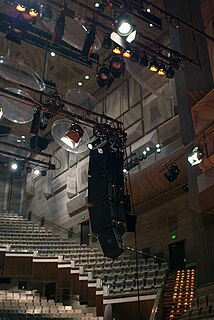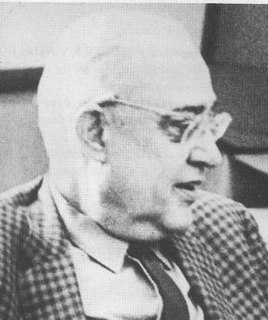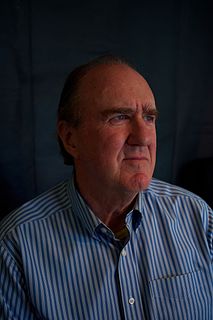Related Research Articles
MPEG-1 Audio Layer II or MPEG-2 Audio Layer II is a lossy audio compression format defined by ISO/IEC 11172-3 alongside MPEG-1 Audio Layer I and MPEG-1 Audio Layer III (MP3). While MP3 is much more popular for PC and Internet applications, MP2 remains a dominant standard for audio broadcasting.
The FM broadcast band, used for FM broadcast radio by radio stations, differs between different parts of the world. In Europe and Africa ( ) and in Australia, it spans from 87.5 to 108 megahertz (MHz) - also known as VHF Band II - while in the Americas it ranges from 88 to 108 MHz. The FM broadcast band in Japan uses 76 to 95 MHz. The International Radio and Television Organisation (OIRT) band in Eastern Europe is from 65.8 to 74.0 MHz, although these countries now primarily use the 87.5 to 108 MHz band, as in the case of Russia. Some other countries have already discontinued the OIRT band and have changed to the 87.5 to 108 MHz band.

Acoustical engineering is the branch of engineering dealing with sound and vibration. It includes the application of acoustics, the science of sound and vibration, in technology. Acoustical engineers are typically concerned with the design, analysis and control of sound.
Eberhard Sengpiel was a multiple Grammy award-winning sound engineer. He was also a musician in his own right and a lecturer at the Berlin University of the Arts, UdK-Berlin.
Established in 1948, the Audio Engineering Society (AES) draws its membership from engineers, scientists, other individuals with an interest or involvement in the professional audio industry. The membership largely comprises engineers developing devices or products for audio, and persons working in audio content production. It also includes acousticians, audiologists, academics, and those in other disciplines related to audio. The AES is the only worldwide professional society devoted exclusively to audio technology.

The Acoustical Society of America (ASA) is an international scientific society founded in 1929 dedicated to generating, disseminating and promoting the knowledge of acoustics and its practical applications. The Society is primarily a voluntary organization of about 7500 members and attracts the interest, commitment, and service of many professionals.

Leo Leroy Beranek was an American acoustics expert, former MIT professor, and a founder and former president of Bolt, Beranek and Newman. He authored Acoustics, considered a classic textbook in this field, and its updated and extended version published in 2012 under the title Acoustics: Sound Fields and Transducers. He was also an expert in the design and evaluation of concert halls and opera houses, and authored the classic textbook Music, Acoustics, and Architecture, revised and extended in 2004 under the title Concert Halls and Opera Houses: Music, Acoustics, and Architecture.
Gerhard M. Sessler is a German inventor and scientist. He is Professor emeritus at the Department of Electrical Engineering and Information Technology of the Technische Universität Darmstadt.
Tonmeister is most often found as a job description in the music and recording industries. It describes a person who is a sound master : a person who creates recordings or broadcasts of music who is both deeply musically trained and also who has a detailed theoretical and practical knowledge of virtually all aspects of sound recording, music mixing and mastering. Both competencies have equal importance in a tonmeister's work.
Meyer Sound Laboratories is an American company based in Berkeley, California that manufactures self-powered loudspeakers, multichannel audio show control systems, electroacoustic architecture, and audio analysis tools for the professional sound reinforcement, fixed installation, and sound recording industries.

Frederick Vinton Hunt was an inventor, a scientist and a professor at Harvard University who worked in the field of acoustic engineering.

John Kenneth Hilliard was an American acoustical and electrical engineer who pioneered a number of important loudspeaker concepts and designs. He helped develop the practical use of recording sound for film, and won an Academy Award in 1935. He designed movie theater sound systems, and he worked on radar as well as submarine detection equipment during World War II. Hilliard collaborated with James B. "Jim" Lansing in creating the long-lived Altec Voice of the Theatre speaker system. Hilliard researched high-intensity acoustics, vibration, miniaturization and long-line communications for NASA and the Air Force. Near the end of his career, he standardized noise-control criteria for home construction in California, a pattern since applied to new homes throughout the U.S.
Jim Anderson is an internationally recognized recording engineer and producer for acoustic music in the recording, radio, television, and film industries.

An audio engineer helps to produce a recording or a live performance, balancing and adjusting sound sources using equalization and audio effects, mixing, reproduction, and reinforcement of sound. Audio engineers work on the "...technical aspect of recording—the placing of microphones, pre-amp knobs, the setting of levels. The physical recording of any project is done by an engineer ... the nuts and bolts." It's a creative hobby and profession where musical instruments and technology are used to produce sound for film, radio, television, music, and video games. Audio engineers also set up, sound check and do live sound mixing using a mixing console and a sound reinforcement system for music concerts, theatre, sports games and corporate events.
Jens Peter Blauert is a German scientist specializing in psycho-acoustics and an emeritus professor at the Ruhr-Universität Bochum, where he founded the Institute of Communication Acoustics. His major scientific fields of interest are spatial hearing, binaural technology, aural architecture, perceptual quality, speech technology, virtual environments and tele-presence.
John E. Volkmann was a sound engineer and architect.
The Variable Room Acoustics System is an acoustic enhancement system for controlling room acoustics electronically. Such systems are increasingly being used to provide variable acoustics for multipurpose venues.

Cliff Henricksen is a musician, inventor and audio technologist. He is self-taught as a musician with a graduate degree in mechanical engineering at Massachusetts Institute of Technology (MIT). Throughout his career Cliff has found innovative ways to apply engineering basics to electro acoustics and to audio technology as it applies to music and in particular to live music performance. He has invented and engineered a wide variety of technologies and products well known in the world of professional audio. Today he balances work in audio and work as a performing musician.

The Verband Deutscher Tonmeister e.V. (VDT) is a registered association for audio industry professionals. The VDT has evolved from the Deutsche Filmtonmeister-Vereinigung that was founded in Munich in 1950.
Ville Topias Pulkki is a Finnish acoustics researcher and professor at Aalto University 2015–.
References
- ↑ "AES Member Profile » Gerhard Steinke". www.aes.org. Retrieved 2017-01-07.
- ↑ "AES Gold Medal Award » Gerhard Steinke". www.aes.org. Retrieved 2017-01-07.
- ↑ "AES Gold Medal Award » Gerhard Steinke". www.aes.org. Retrieved 2016-02-18.
- ↑ Steinke, G., Herzog, G., Der Raum ist das Kleid der Musik, 2. Ed. 2013, Berlin, Kopie and Druck-Adlershof.
- "HEYSER LECTURE". Audio Engineering Society. 2007-04-20. Retrieved 2011-05-10.